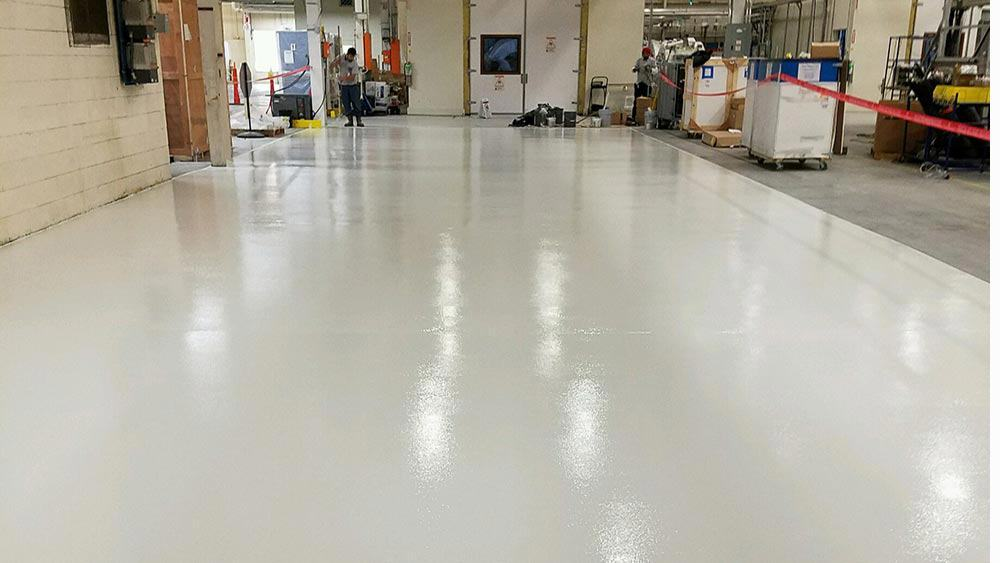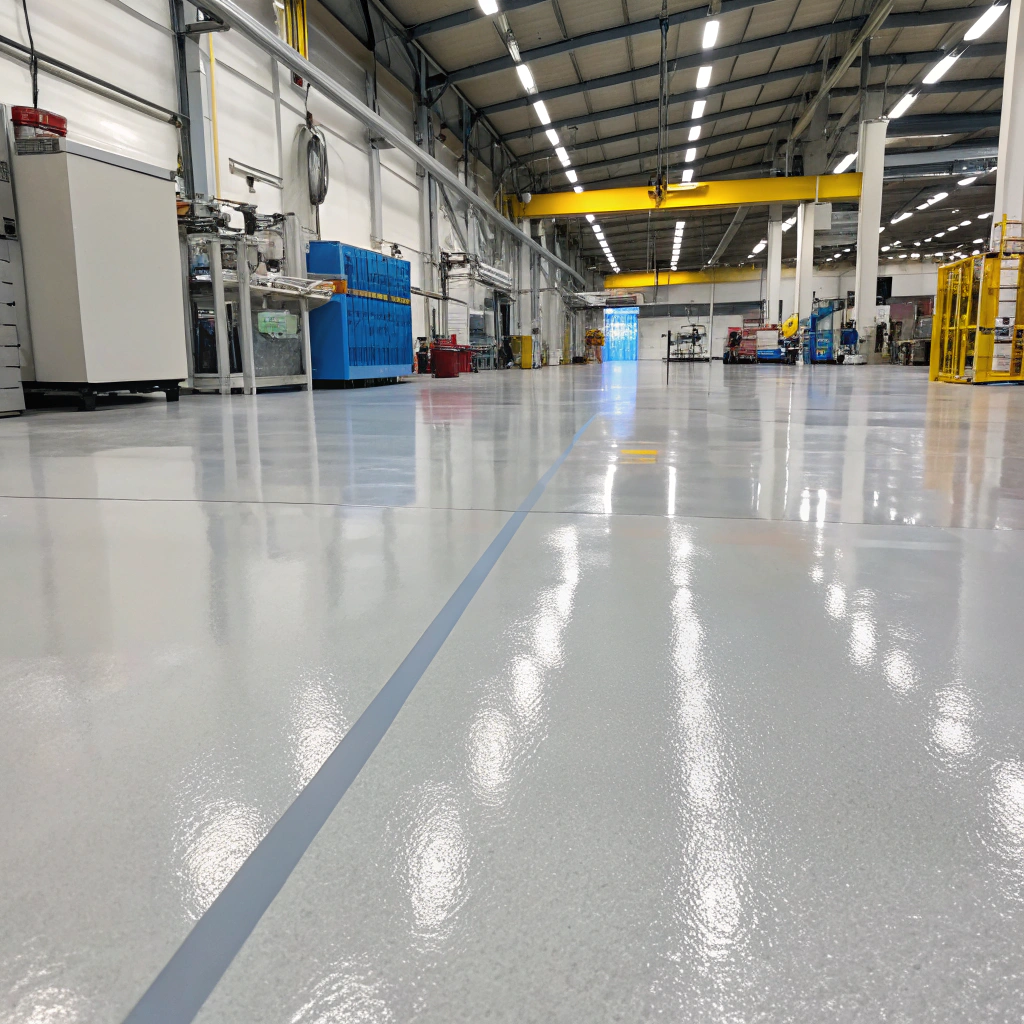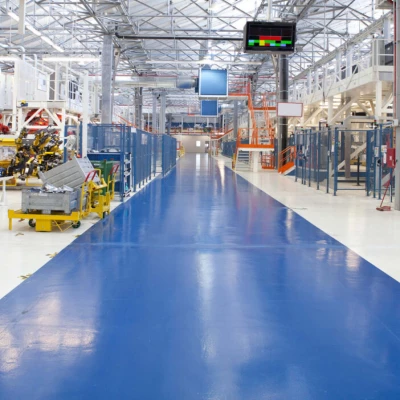
Are you searching for a coating that combines exceptional toughness with resistance to the harshest environments? Perhaps you’ve encountered the limitations of traditional coatings – chipping, fading, and frequent maintenance. It’s a common challenge.
What are polyurethane coatings? Polyurethane coatings are polymer coatings formed by reacting a polyisocyanate with a polyol. They are renowned for outstanding durability, abrasion resistance, chemical resistance, and versatility.

The versatility of polyurethane coating is noteworthy. Let’s delve deeper.
II. The Fundamentals of Polyurethane Coatings
1. What are Polyurethane Coatings?
Tired of coatings that fail prematurely under demanding conditions?
Polyurethane coatings provide a high-performance protective layer resulting from the chemical reaction of a polyisocyanate with a polyol. This reaction creates a durable and versatile material. As the renowned chemist Otto Bayer, the inventor of polyurethanes, stated, "I… saw at once that [polyurethanes] opened up a remarkable range of new possibilities." (Source: Otto Bayer: The Inventor of Polyurethanes, Bayer AG, 2003).
Let’s break down the core concepts:
- Definition: Polyurethane coatings are essentially liquid plastics that dry to form a robust, resilient film. This film shields the underlying material (substrate) from wear, chemical attack, and environmental factors. The key components, polyisocyanates and polyols, react to create a polymer network. Additives like curing agents and UV stabilizers enhance specific properties.
- Formation Process: The polymerization reaction between polyisocyanates and polyols forms long chains of molecules, creating a strong, cross-linked network. This network provides the impressive strength and flexibility characteristic of these coatings.
- Key Properties: Polyurethane coatings excel in challenging environments:
- Abrasion Resistance: They withstand significant wear and tear. Studies confirm that polyurethane coatings can endure up to 10 times more abrasion than certain traditional epoxy coatings. (Source: Journal of Coatings Technology and Research, Vol. 15, Issue 2, 2018, pp. 255-265)
- Chemical Resistance: They resist damage from many chemicals, oils, and solvents, crucial in industrial settings.
- Weather Resistance: They endure sun, rain, and temperature fluctuations, maintaining integrity and appearance.
- Flexibility: They can bend and flex with the underlying material, preventing cracking.
- Adhesion: They bond strongly to diverse substrates, including metal and concrete.
2. Types of Polyurethane Coatings
Did you know that a range of polyurethane coatings exists, each tailored for specific performance needs?
Polyurethane coatings are primarily categorized into four types: water-based, solvent-based, powder, and UV-cured. Each offers unique performance characteristics, environmental impact, and application suitability.

- Classification Criteria:
- By Curing Method: Solvent evaporation, chemical reaction (crosslinking), or UV light exposure.
- By Number of Components: One-component (1K) or two-component (2K).
- By Chemical Structure: Aliphatic or Aromatic.
Let’s examine each type:
-
Water-based Polyurethane Coatings:
- Composition: Water serves as the primary solvent, enhancing environmental friendliness. They typically contain polyurethane dispersions (PUDs) in water.
- Characteristics: Lower VOC emissions, reduced odor, good abrasion resistance, and flexibility.
- Pros & Cons:
- Pros: Eco-friendly, easy cleanup.
- Cons: May have slightly lower chemical resistance than solvent-based options.
- Applications: Interior applications.
- Application Method: Brush, roll, or spray.
- Environmental Friendliness: Water-based options significantly reduce air pollution. VOC levels are typically below 250 g/L, with some meeting zero-VOC standards.
-
Table:
Coating Type VOC Content (g/L) Water-based Polyurethane < 250 Solvent-based Polyurethane 250 – 500+ Epoxy Varies widely
-
Solvent-based Polyurethane Coatings:
- Composition: Organic solvents (e.g., xylene, toluene) dissolve the polyurethane resin.
- Characteristics: Excellent chemical resistance, rapid drying, and high gloss potential.
- Pros & Cons:
- Pros: Superior durability, fast cure times, suited for demanding environments.
- Cons: Higher VOC emissions, strong odor, require excellent ventilation.
- Applications: Industrial floors, high-performance coatings for metal, protective coatings for infrastructure.
- Application Method: Typically sprayed, although some can be brushed or rolled.
- Performance Advantages: Often exhibit superior hardness and chemical resistance, withstanding a broader range of solvents and chemicals compared to water-based counterparts.
-
Table:
Characteristic Solvent-based Polyurethane Water-based Polyurethane Chemical Resistance Higher Moderate Hardness Higher Moderate Drying time Faster Slower
-
Powder Polyurethane Coatings:
- Composition: 100% solids, containing no solvents. They consist of finely ground polyurethane resin, pigments, and additives.
- Characteristics: Extremely durable, excellent chemical resistance, environmentally friendly.
- Pros & Cons:
- Pros: Zero VOC emissions, high transfer efficiency (minimal waste), excellent finish quality.
- Cons: Requires specialized equipment (electrostatic spray gun and curing oven).
- Applications: Metal furniture, appliances, architectural metalwork.
- Application Method: Electrostatic spray application, followed by oven curing.
- Environmental & Efficiency Benefits: Eliminate VOC emissions entirely and achieve very high transfer efficiency (up to 95%), minimizing material waste.
-
Table:
Coating Type VOC Emissions Transfer Efficiency Powder Polyurethane Zero Up to 95% Solvent-based Polyurethane High 40-60%
-
UV-cured Polyurethane Coatings:
- Composition: Contain photoinitiators that trigger curing upon exposure to ultraviolet (UV) light.
- Characteristics: Extremely fast curing, high gloss, excellent abrasion and chemical resistance.
- Pros & Cons:
- Pros: Instant curing, high productivity, excellent performance.
- Cons: Requires UV curing equipment, may have limitations with complex geometries.
- Applications: Printing inks, electronics, industrial finishes.
- Application Method: Spray or roll coating, followed by UV lamp exposure.
- Curing Speed Comparison: Cure in seconds, compared to hours or days for some solvent-based or water-based coatings.
-
Table:
Coating Type Curing Time UV-cured Polyurethane Seconds Solvent-based Polyurethane Hours to Days
-
Two-component (2K) vs. One-component (1K) Polyurethane Coatings:
- 2K Coatings: Supplied in two containers: the base resin (polyol) and the hardener (polyisocyanate), mixed before application. 2K coatings deliver superior performance and durability due to robust cross-linking during curing.
- 1K Coatings: Ready-to-use, requiring no mixing. They typically cure via air moisture (moisture-cured) or solvent evaporation. 1K coatings are easier to use but may not match the performance of 2K options.
-
Table:
Characteristic 2K Polyurethane 1K Polyurethane Pot Life Limited Unlimited Durability Higher Moderate Chemical Resistance Higher Moderate Application More demanding Easier 3. Why Choose Polyurethane Coatings?
Seeking a coating solution that minimizes maintenance and maximizes longevity?
Polyurethane coatings excel in durability and aesthetics, offering long-lasting protection and making them ideal for demanding applications. They are, as the saying goes, "the workhorses of the coating industry."
[Image Placeholder: Applications of polyurethane coatings in various demanding environments]
-
Benefits in Detail:
- Durability: Withstand scratches, impacts, and daily wear.
- Abrasion Resistance: Handle heavy traffic, moving machinery, and abrasion, outperforming epoxies significantly in tests.
- Chemical Resistance: Protect against spills and exposure to various chemicals, oils, and solvents.
- Weather Resistance: Endure UV radiation, rain, and temperature changes without fading or cracking.
- Flexibility: Bend and flex with the substrate, ideal for materials that expand and contract.
- Adhesion: Form a strong bond with various surfaces.
- Gloss and Color Retention: Maintain shine and color over time.
- UV Resistance: Enhanced with UV absorbers for superior sunlight resistance.
- Water Resistance: Provide excellent protection against water damage.
-
Comparison with Other Coatings:
- Polyurethane vs. Epoxy: Polyurethane offers superior flexibility, UV resistance, and abrasion resistance. Epoxy is harder but more brittle, prone to cracking. Polyurethane is preferred for outdoor use due to its UV resistance.
- Polyurethane vs. Other Common Coatings: Polyurethane often outperforms alkyds and varnishes in durability, chemical resistance, and weather resistance.
Table:
Characteristic Polyurethane Epoxy Flexibility High Low UV Resistance High Low Abrasion Resistance High High Chemical Resistance High High Outdoor Durability Excellent Good Cost Moderate-High Moderate
III. Applications of Polyurethane Coatings
1. A World of Applications
From industrial infrastructure to high-performance sports facilities, polyurethane coatings play a critical role.
Polyurethane coatings, prized for their performance, are used extensively across industries, offering protection and enhancing functionality. Their adaptability makes them a valuable asset in diverse applications.

-
Overview: Their customizability to meet specific performance needs makes them popular for a wide array of projects.
-
Detailed Breakdown by Industry:
-
Industrial Flooring:
- Applications: Factories, warehouses, parking garages, laboratories, food processing plants.
- Specific Needs: Resistance to heavy loads, abrasion, chemicals, impact, and easy cleaning – floors must withstand constant traffic and potential spills.
- Recommended Polyurethane Types: 2K solvent-based or water-based polyurethane coatings.
- Case Study: A manufacturing facility replaced epoxy flooring with a 2K polyurethane system. Results: a 50% reduction in maintenance costs and improved durability, with no cracking or peeling after three years of heavy use. This aligns with the principle that "prevention is better than cure," demonstrating the long-term cost-effectiveness of a superior coating.
-
- Applications: Basketball courts, running tracks, tennis courts, gymnasiums.
- Specific Needs: Resilience, shock absorption, slip resistance, abrasion resistance, vibrant colors – a safe and comfortable surface for athletes.
- Recommended Polyurethane Types: Elastic polyurethane coatings, often water-based.
- Case Study: A university installed a polyurethane running track. Athlete feedback showed improved comfort and reduced joint stress. Injury rates decreased by 15% in the first year, highlighting the tangible benefits of the right coating choice.
-
Waterproofing:
- Applications: Roofs, basements, swimming pools, bridges, tunnels, water tanks.
- Specific Needs: Waterproofing, impermeability, resistance to water pressure, weathering, and durability.
- Recommended Polyurethane Types: Polyurea coatings (a type of polyurethane), 2K polyurethane coatings.
- Case Study: A commercial building waterproofed its flat roof with a polyurea coating. This eliminated persistent leaks, saving an estimated $10,000 annually in avoided water damage repairs. The long-term durability echoes the adage, "a stitch in time saves nine."
-
Metal Protection:
- Applications: Bridges, pipelines, storage tanks, ships, steel structures, offshore platforms.
- Specific Needs: Rust prevention, corrosion resistance, chemical resistance, weathering, strong adhesion – crucial in harsh environments.
- Recommended Polyurethane Types: 2K solvent-based polyurethane coatings, often with zinc-rich primers.
- Case Study: A steel bridge coated with a 2K polyurethane system showed no corrosion after 10 years in a coastal environment, significantly outperforming the previous system requiring recoating every five years. This resulted in substantial cost savings and reduced downtime, illustrating the value of a durable, long-lasting protective coating.
-
IV. Application and Maintenance of Polyurethane Coatings
1. How to Apply Polyurethane Coatings
Proper application is paramount to realizing the full potential of polyurethane coatings.
Applying polyurethane coatings involves crucial steps: surface preparation, primer application (if needed), coating mixing (for 2K systems), application (brushing, rolling, or spraying), and curing.
-
Step-by-Step Guide:
-
Surface Preparation:
- The most critical step. The surface must be clean, dry, and free of contaminants (oil, grease, dust, rust, old coatings).
- Different substrates require specific preparation:
- Metal: Degreasing, rust removal (sandblasting, grinding), often priming.
- Concrete: Cleaning, etching (for better adhesion), crack repair.
-
Table:
Substrate Preparation Methods Metal Degreasing, rust removal, priming Concrete Cleaning, etching, crack repair
-
Priming (if necessary):
- Enhances adhesion, seals the substrate, and provides a uniform surface. Primer choice depends on the substrate and coating type.
-
Mixing (for 2K coatings):
- 2K coatings require precise mixing of the base resin and hardener. Adhere strictly to the manufacturer’s instructions for mixing ratio and time. Improper mixing compromises performance.
-
Application Methods:
- Brushing: For small areas and detail work.
- Rolling: For larger, flat surfaces.
- Spraying: Most common for large areas and achieving a smooth finish. Various spray equipment is available (airless, air-assisted airless, HVLP).
-
Drying and Curing:
- Drying and curing times vary with coating type, temperature, humidity, and ventilation.
- Follow manufacturer recommendations.
- Avoid application in extreme temperatures or high humidity.
-
Recoating:
- If multiple coats are needed, follow the manufacturer’s recommended recoat window.
-
2. Troubleshooting Common Problems
Addressing challenges during polyurethane coating application is crucial for optimal results.
Common issues include blistering, cracking, peeling, and discoloration. These problems are often linked to inadequate surface preparation, improper application, or environmental factors. They can be addressed with correct procedures and preventative measures.
-
Problem-Solution Table:
Problem Possible Causes Solutions Blistering Moisture on surface, contamination, thick coats, incorrect hardener ratio Ensure surface is dry and clean, control coat thickness, properly mix hardener Cracking High surface tension, thick coats, substrate movement, low-temperature application Reduce surface tension, control coat thickness, choose flexible coatings, avoid low-temperature application Peeling Poor surface preparation, incompatible primer, poor intercoat adhesion Thoroughly clean and prepare the surface, choose the right primer, ensure proper drying between coats Discoloration UV exposure, chemical exposure, unstable pigments Use UV-resistant coatings, avoid contact with corrosive substances, choose stable pigments Fish Eyes Surface Contamination Thoroughly clean, use appropriate solvent
3. Maintenance and Care
Extending the life and appearance of your polyurethane coating requires proper care.
Regular cleaning, avoiding scratches and chemical corrosion, and promptly repairing minor damage are key.
- Cleaning: Use mild detergents and water. Avoid abrasive cleaners or harsh chemicals.
- Avoiding Damage: Protect from scratches, impacts, and prolonged chemical exposure.
- Repairing Minor Damage: Repair small areas promptly to prevent further deterioration.
V. Future Trends in Polyurethane Coatings
1. Sustainability and Environmental Concerns
The polyurethane coatings industry is actively pursuing more sustainable solutions.
The industry is moving towards low-VOC, water-based, bio-based, and recyclable formulations to minimize environmental impact.
- Low-VOC and Zero-VOC Coatings: Regulations are driving the development of coatings with reduced volatile organic compound (VOC) emissions.
- Water-based Technology: Water-based polyurethane coatings are gaining popularity due to their lower environmental impact.
- Bio-based Polyurethanes: Research focuses on developing polyurethanes from renewable resources.
- Recyclable Coatings: Efforts are underway to develop coatings that are easily recyclable.
2. Smart Coatings and Nanotechnology
Innovation continues to drive the development of advanced polyurethane coatings.
The integration of smart coatings and nanotechnology introduces new functionalities: self-healing, self-cleaning, antifouling, and antimicrobial properties, enhancing performance.
- Self-healing Coatings: Automatically repair minor scratches, extending lifespan.
- Self-cleaning Coatings: Superhydrophobic surfaces repel water and dirt.
- Antifouling Coatings: Prevent marine organism growth on ship hulls, improving efficiency.
- Antimicrobial Coatings: Inhibit bacteria growth, ideal for hygiene-sensitive environments.
- Other Smart Functionalities: Researchers explore corrosion sensing, temperature sensing, and strain sensing.
VI. Conclusion
Polyurethane coatings offer an exceptional combination of durability, versatility, and performance. They are a vital tool for protecting and enhancing surfaces across diverse industries, from industrial flooring and sports facilities to critical infrastructure protection. With ongoing advancements in sustainability and smart technologies, the future of polyurethane coatings remains promising.
Ready to explore polyurethane coating solutions for your next project? Contact us today to discuss your needs and discover the optimal coating for your application!




